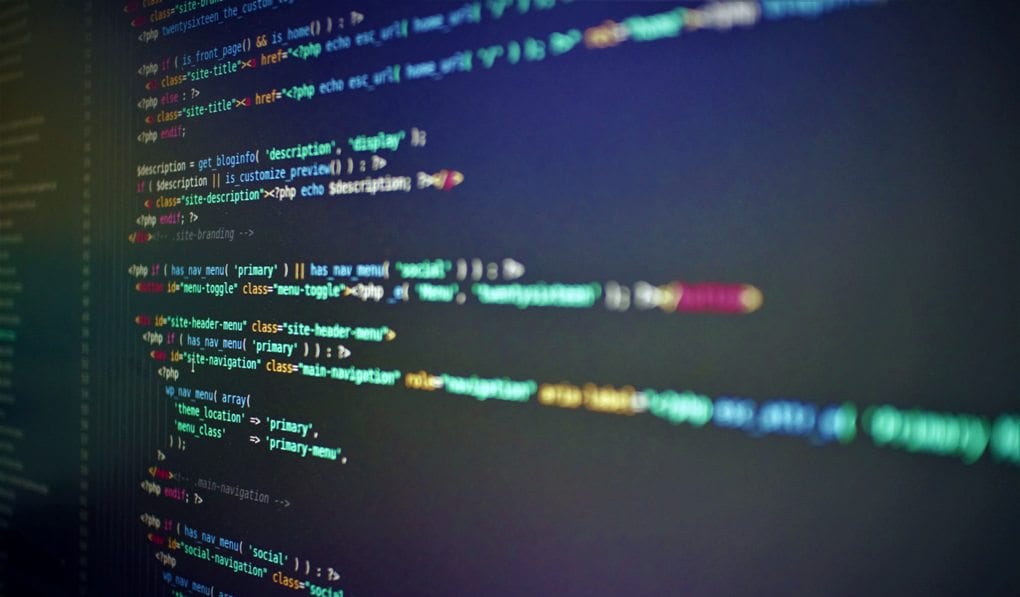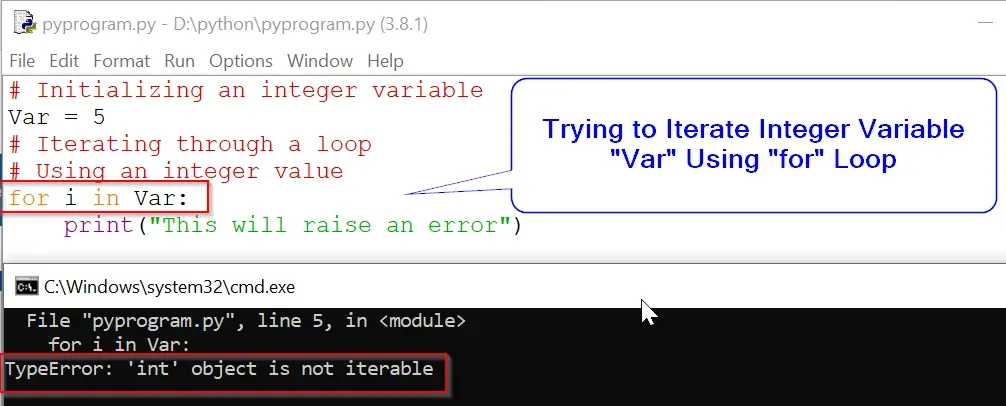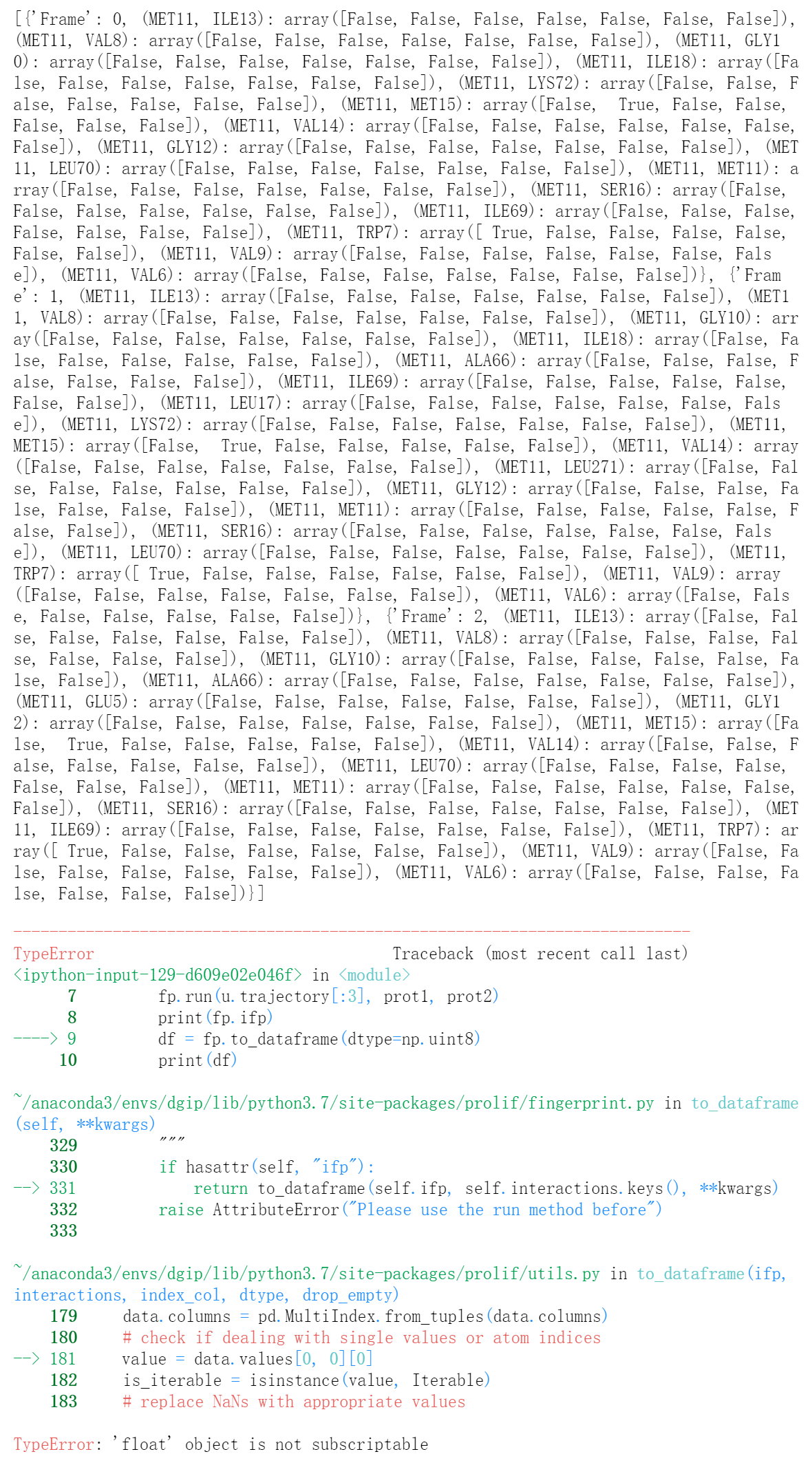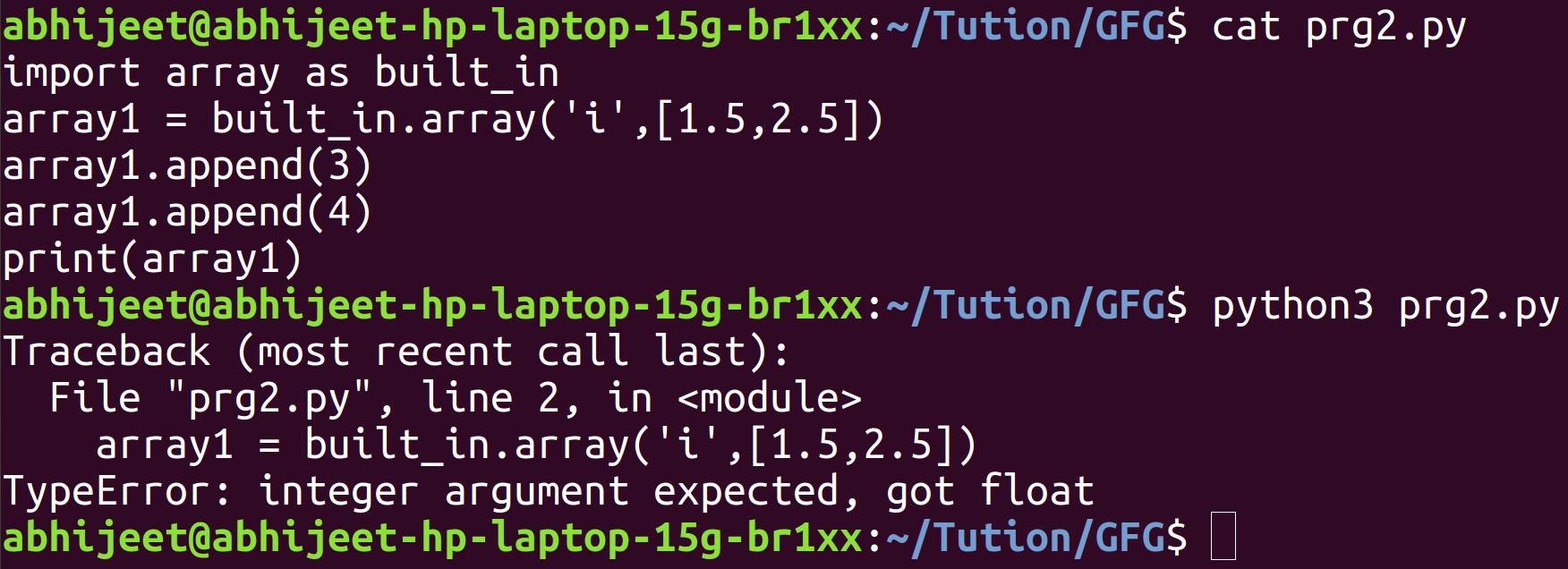Typeerror: ‘Float’ Object Is Not Iterable
Introduction to TypeError:
TypeError is a common error that occurs in programming when an operation or function is applied to an object of an inappropriate type. It is a runtime error that can prevent code from running correctly and can be frustrating for developers. One specific type of TypeError that often occurs is the “‘float’ object is not iterable” error. This error message indicates that a float object, which is a numeric data type that represents decimal values, is being used in an iterable context where it cannot be iterated over.
Understanding Iterable Objects:
Iterable objects are objects that can be looped over or iterated. They allow us to access each item within the object one by one until all the items have been accessed. Examples of iterable objects include lists, tuples, strings, dictionaries, and sets. These objects have built-in methods or features that allow us to easily iterate over their elements.
To understand how iterable objects work, let’s consider an example. Suppose we have a list of names:
names = [‘Alice’, ‘Bob’, ‘Charlie’]
We can use a for loop to iterate over each name in the list:
for name in names:
print(name)
This code will output:
Alice
Bob
Charlie
The for loop iterates over each element in the list and assigns it to the variable “name”. We can then perform operations or tasks on each individual item within the iterable object.
Understanding Non-Iterable Objects:
Non-iterable objects, on the other hand, are objects that cannot be looped over or iterated. They do not have the necessary built-in methods or features to allow for iteration. Examples of non-iterable objects include integers, floats, booleans, and None.
If we try to iterate over a non-iterable object, we will encounter a TypeError. This is because the object does not have the necessary attributes or methods to support iteration.
Differences between Iterable and Non-Iterable Objects:
The key difference between iterable and non-iterable objects lies in their ability to be looped over or iterated. Iterable objects can be looped over using loops like for and while loops, whereas non-iterable objects cannot be looped over.
Common Causes of ‘float’ object is not iterable:
1. Attempting to iterate over a float object:
One common cause of the “‘float’ object is not iterable” error is attempting to use a for loop to iterate over a float object directly. For example:
number = 3.14159
for digit in number:
print(digit)
This code will raise a TypeError because a float object cannot be directly looped over. Float objects are not iterable and do not have the necessary attributes or methods to support iteration.
2. Using a float value in an iterable context:
Another common cause of this error is mistakenly using a float value in a context where an iterable object is expected. For example, consider the following code:
float_value = 2.75
numbers = [1, 2, 3]
new_numbers = numbers + float_value
This code will raise a TypeError because the float value is not iterable, and the addition operator (+) is expecting two iterable objects to concatenate them. To fix this, we need to convert the float value to a valid iterable object before performing the concatenation.
How to Fix ‘float’ object is not iterable:
To fix the “‘float’ object is not iterable” error, we can follow the following steps:
1. Check the code for incorrect iteration over float objects:
Review your code and identify any for or while loops in which a float object is directly used as the iterable. Make sure to replace the float object with a valid iterable object, such as a list or string, depending on your specific needs.
2. Convert the float object to an iterable type:
If you encounter a situation where a float object needs to be used in an iterable context, such as concatenation or iteration, you can convert the float object to a compatible iterable type. For example, you can convert a float to a string using the str() function or to a list using the list() function:
float_value = 2.75
string_value = str(float_value)
list_value = list(float_value)
By converting the float object to a compatible iterable type, you can ensure that it can be used in contexts where iteration is expected.
Best Practices to Avoid ‘float’ object is not iterable:
To avoid encountering the “‘float’ object is not iterable” error, consider the following best practices:
1. Always use the correct type of object for iteration:
Before using an object in an iterable context, ensure that it is a valid iterable object. If you need to perform operations on numeric values, use the appropriate numeric data type (int or float) instead of trying to iterate over it directly.
2. Double-check the data type before performing iterations:
When working with multiple data types, it is important to double-check the data type of a variable or object before attempting to iterate over it. This can help avoid mistakenly using a non-iterable object in an iterable context.
Conclusion:
In conclusion, the “‘float’ object is not iterable” error occurs when a float object is used in an iterable context where it cannot be iterated over directly. This error can be fixed by either modifying the code to use the correct type of object for iteration or by converting the float object to a compatible iterable type. By following best practices and double-checking data types, developers can avoid encountering this error and ensure their code runs smoothly.
Python Typeerror: ‘Float’ Object Is Not Iterable
Why Is Float Not Iterable?
In the world of programming, an iterable is an object capable of returning its members one at a time. These members can be accessed by using a loop structure, such as a “for” loop, to iterate over them. It allows developers to process collections of data or elements efficiently. However, there are certain types in programming languages that are not iterable, and one such type is the float.
In most programming languages, a float is a data type used to represent floating-point numbers, which are numbers with a decimal point. Floats are commonly used in calculations that involve non-integer values, such as mathematical operations or financial calculations. Despite its frequent usage, a float is not an iterable type. This article will explore the reasons behind this limitation and offer some insights into alternative approaches.
1. The nature of a float
Floats are essentially single-precision floating-point numbers, which means they can represent a wide range of values, but with limited precision. Due to the way these numbers are stored in memory, they have a finite number of digits that can be represented accurately. This characteristic poses challenges when it comes to iterating over all the possible values of a float.
2. Non-discrete nature
Unlike integers or other iterable types, floats are not discrete. Discrete values are specific and countable, with a finite number of possibilities. For example, if you have a list of integers from 1 to 10, you can easily iterate over each integer by incrementing a counter. However, in the case of floats, the number of possible values between any two given floats is infinite. Consequently, it is not feasible to iterate through an infinite number of possibilities, making floats impractical for iteration.
3. Floating-point precision issues
Floats are susceptible to precision issues due to the finite number of significant digits they can accurately represent. The accuracy of a float decreases as numbers become larger or smaller. This means that floating-point operations might produce small errors that can accumulate when performing multiple calculations. As a result, iterating over floats might lead to unexpected results or inaccuracies.
4. Alternative approaches
Although floats are not iterable by default, there are alternative approaches to achieve similar functionalities:
– Range iteration: Instead of iterating over the values of a float, you can use a specific range of discrete values. For instance, if you need to iterate from 1.0 to 5.0 with a step size of 0.5, you can use the range() function and multiply the values by the desired step size.
– Conversion: If you need to iterate over a range of decimal values, you can convert them to integers and iterate over the resulting values. This approach allows you to perform the necessary calculations as integers and then convert the result back to a float if needed.
– Custom iterable types: You can create custom objects and implement the iterable interface to define your own iteration behavior. By creating a class that represents a collection of float values, you can define methods such as __iter__() and __next__() to control how the values are accessed.
FAQs:
Q: Can I use a float directly in a “for” loop?
A: No, a float cannot be used directly in a “for” loop, as it is not an iterable type. You will need to use an alternative approach, such as converting the float to an integer or using a custom iterable object.
Q: Why are floats not iterable in programming languages?
A: Floats are not iterable due to the non-discrete nature of floating-point numbers, potential precision issues, and the infinite number of possible values between any two floats.
Q: Can floats be converted to iterable types?
A: Yes, floats can be converted to iterable types using alternative approaches, such as range iteration or custom iterable objects.
Q: What are the alternatives to iterating over floats?
A: Some alternatives include iterating over a range of discrete values, converting floats to integers for iteration, or creating custom iterable objects.
Q: Are there programming languages where floats are iterable?
A: The lack of iterability for floats is a limitation common to most popular programming languages, including Python, Java, C++, and JavaScript.
In conclusion, floats are not iterable due to their non-discrete nature, potential precision issues, and the infinite number of possible values between any two floats. While this limitation might pose challenges in certain scenarios, alternative approaches such as range iteration or custom iterable objects can be used to achieve similar functionalities. Understanding these limitations and exploring alternative methods will allow programmers to overcome any obstacles related to iterating over floats.
Are Float Objects Iterable?
In Python, objects of the float data type are not iterable. Iterable objects are those that can be looped over, such as lists, tuples, and strings. Floats, on the other hand, represent real numbers and are not designed to be used in a loop or an iteration.
Floats are an important component in many programming languages, including Python, where they are used to store and manipulate decimal numbers. They are commonly used in scientific and mathematical calculations, as well as in financial applications. While these objects are versatile and widely used, they do not possess the built-in capability to be iterated.
When attempting to iterate over a float object, Python raises a `TypeError` indicating that floats are not iterable. This behavior can be illustrated by the following example:
“`python
number = 3.14
for i in number:
print(i)
“`
The output of this code will result in a `TypeError: ‘float’ object is not iterable`. This error message signifies that the float object cannot be used in a for loop as it lacks the necessary attributes and methods to support iteration.
So, why exactly are float objects not iterable? To understand this, one must delve into the internal representation and behavior of float objects in Python. Floats are stored as floating-point numbers, which are approximations of real numbers. These representations are achieved using binary fraction schemes, typically conforming to the IEEE 754 standard.
The binary fraction representation of floats often leads to small discrepancies or rounding errors. These errors arise due to limitations in representing certain decimal values in a binary system. For example, the decimal number 0.1 cannot be accurately represented in binary form, and therefore it introduces a small error when stored as a float. This inherent imprecision makes float objects unsuitable for iteration as it can lead to unexpected and inconsistent behavior.
However, it is worth mentioning that while the float objects themselves are not iterable, they can still be part of an iterable object. For instance, a list, which is iterable, can hold float values and be looped through. Consider the following code snippet:
“`python
numbers = [3.14, 2.71, 1.618]
for number in numbers:
print(number)
“`
In this example, the list `numbers` contains three float objects. The `for` loop iterates through the list, assigning each float value to the variable `number`, which can then be printed. This demonstrates that even though floats themselves are not iterable, they can be included in iterable structures and accessed through iteration methods.
FAQs:
Q: Can I convert a float object into an iterable object?
A: Yes, it is possible to convert a float object into an iterable object using built-in functions such as `range`, `list`, or `tuple`. For example, the `range` function can be used to create an iterable sequence of integers based on the range specified.
Q: Are there any alternative ways to iterate over float values?
A: If you need to iterate over a range of float values, you can utilize the `numpy` library. The `numpy` library provides functions such as `arange` and `linspace` that allow you to create arrays of evenly spaced float values, which can then be iterated over.
Q: Are floating-point errors the only reason floats are not iterable?
A: While floating-point errors do play a role in float objects not being iterable, another crucial factor is the absence of internal methods required for iteration. Iterable objects in Python have specific methods like `__iter__` and `__next__` that enable their iteration capabilities. Float objects lack these methods, making them incompatible with iteration.
Q: Is it possible to iterate over float values using external libraries?
A: Yes, some specialized libraries, such as `numpy` and `pandas`, offer iterable structures and methods specifically designed for handling float values. These libraries provide additional functionality and tools for working with numerical data, including iteration capabilities.
Q: Can I convert a float object to a string and iterate over its characters?
A: Yes, you can convert a float object to a string using the `str` function, and then iterate over its characters using a for loop. However, it is important to note that this will iterate over the individual characters of the string representation of the float, rather than its numerical value.
Q: Are there any workarounds for iterating over float objects?
A: While float objects themselves cannot be directly iterated, you can create a custom iterable object, such as a class, that holds the float as its attribute. By implementing the required methods like `__iter__` and `__next__`, you can achieve iteration over the desired float value.
In conclusion, float objects in Python are not inherently iterable due to their internal representation and lack of necessary methods. While they cannot be directly used in a loop, they can be included in iterable structures or converted into iterable objects using appropriate functions or external libraries. Understanding the limitations of floats and their behavior in iteration will enable programmers to effectively handle numerical data in their Python applications.
Keywords searched by users: typeerror: ‘float’ object is not iterable TypeError type object is not iterable, Int’ object is not iterable, Queue object is not iterable, Float’ object is not subscriptable, Float to int Python, Convert float list to int Python, Append float to list python, List to float Python
Categories: Top 69 Typeerror: ‘Float’ Object Is Not Iterable
See more here: nhanvietluanvan.com
Typeerror Type Object Is Not Iterable
In Python, a common error that developers come across is the TypeError: ‘type’ object is not iterable. This error occurs when you try to iterate over or use an iterable method on an object that is not iterable.
Iterables refer to objects that can be looped over or have their elements accessed one by one. Examples of iterable objects in Python include lists, tuples, sets, strings, and dictionaries. When you try to perform operations that are typical for iterables on an object that lacks the necessary methods, Python raises a TypeError, informing you that the object is not iterable.
In this article, we will delve into the details of the TypeError: ‘type’ object is not iterable, explore the main causes, and discuss potential solutions to help you resolve this issue efficiently.
Causes of TypeError: ‘type’ object is not iterable:
1. Missing iteration methods: The most common cause of this error is attempting to iterate over an object that does not support iteration. As mentioned earlier, only objects that implement certain methods can be iterated over.
2. Confusion between class and instance: Another possible cause is mistakenly using the name of a class instead of an instance of the class. When you try to iterate over a class object itself rather than an instance of that class, the TypeError is raised.
3. Overwriting built-in objects: If you have inadvertently overwritten a built-in object or class, such as list or tuple, with your own definition, it may cause this error when you try to iterate over it.
Solutions to TypeError: ‘type’ object is not iterable:
1. Verify object iterability: The first step to solving this error is to ensure that the object you are trying to iterate over is indeed iterable. Check the object’s documentation or use Python’s iterable function to determine if it supports iteration. For instance, you can use the `iter()` function to check whether it raises a TypeError or produces an iterator.
2. Check object type: If you are mistakenly using a class object instead of an instance, double-check your code and verify that you are working with an instance of the class, not the class itself.
3. Review variable names: It is essential to check if you have inadvertently defined a variable with a name that clashes with a built-in object or class. If Python cannot find the correct iterable methods due to a mismatch in variable naming, it can lead to this error.
4. Implement missing iteration methods: If you have created a custom object or class, ensure that it implements the necessary iteration methods. These methods are `__iter__()` and `__next__()` in the case of iterators, and `__getitem__()` for other types of iterables. Implementing these methods will enable iteration over your custom objects.
Now, let’s address some frequently asked questions regarding the TypeError: ‘type’ object is not iterable:
FAQs:
Q1. How do I fix the error if I am using a built-in object?
If you encounter this error when using a built-in object, such as a list or a tuple, it is likely that you have unintentionally overwritten the default implementation of that object. To fix this, review your code and ensure you are not reassigning a variable with a built-in object name. Rename your variables if necessary to avoid conflicts.
Q2. What can I do if I encounter this error with a custom class?
For custom classes, double-check that you are using an instance of the class rather than the class itself. If you are working with an instance and the error still occurs, ensure that your custom class correctly implements the necessary iteration methods (`__iter__()` and `__next__()`) or `__getitem__()`.
Q3. I am trying to iterate over a dictionary, but I still encounter this error. Why?
Dictionaries are iterable objects in Python. However, when iterating over a dictionary, you may encounter this error if you are attempting to iterate over the dictionary object directly, rather than its keys, values, or items. To fix this, iterate over the keys, values, or items of the dictionary, using `dict.keys()`, `dict.values()`, or `dict.items()` respectively.
To conclude, the TypeError: ‘type’ object is not iterable is a commonly encountered error in Python. The main causes typically involve missing iteration methods, confusion between class and instance, or overwriting built-in objects. By understanding the possible causes and following the suggested solutions, you can swiftly overcome this error and ensure smooth execution of your Python programs.
Int’ Object Is Not Iterable
Introduction (100 words):
In the world of programming, errors are inevitable, and one common error encountered by Python developers is the “Int’ object is not iterable” error message. This error occurs when a non-iterable object, such as an integer, is mistakenly treated as an iterable object, like a list or a string. This article will delve into the nuances of this error, explain the reasons behind its occurrence, and provide solutions to prevent and troubleshoot it effectively.
Understanding the “Int’ object is not iterable” Error (250 words):
When developers attempt to iterate over an object using a loop or a comprehension, Python expects the object to be iterable. An iterable object is one that can be looped over, such as lists, tuples, strings, or generators. However, integers, being non-iterable objects in Python, cannot be looped over directly.
The error message “Int’ object is not iterable” is raised when an integer is mistakenly passed to a construct that expects an iterable object. For example, consider the following code snippet:
“`python
my_number = 42
for digit in my_number:
print(digit)
“`
In this scenario, the for loop tries to iterate over the individual digits of the integer `my_number`, which is not possible. Consequently, it raises the “Int’ object is not iterable” error.
Reasons behind the Error (200 words):
The primary reason behind this error is a misunderstanding or oversight regarding the nature of the object being used in an iterable context. Newcomers to programming or those transitioning from languages where integers can be iterated over easily may encounter this error frequently.
Additionally, the error can arise when a function is called with an integer instead of an iterable object. As certain Python functions inherently expect iterable arguments, passing an integer accidentally can lead to this error.
Common Scenarios of the “Int’ object is not iterable” Error (350 words):
1. Using an integer instead of a range: One common occurrence of this error is when intending to use a loop to iterate over a range of numbers. Attempting to loop over an integer instead of using the `range()` function can trigger this error. For instance:
“`python
n = 5
for i in n:
print(i)
“`
2. Incorrect use of list comprehensions: List comprehensions can sometimes lead to this error if an integer is mistakenly used as the source of iteration instead of an iterable object. For example:
“`python
my_string = ‘Hello’
my_list = [char for char in my_string if char not in 2]
print(my_list)
“`
3. Passing an integer to a function that expects an iterable: It is crucial to ensure that the correct data types are used when calling functions. Some functions, like `sum()` or `max()`, expect an iterable as an argument. Passing an integer instead can result in the “Int’ object is not iterable” error. Consider this code snippet:
“`python
my_number = 42
my_sum = sum(my_number)
print(my_sum)
“`
Solutions and Best Practices (200 words):
To remedy and prevent the “Int’ object is not iterable” error, developers can follow these practices:
1. Review the code: Double-check the code for scenarios where an integer might be mistakenly used as an iterable object.
2. Validate input types: Confirm that functions are being called with the appropriate input types. Use Python’s built-in `isinstance()` function to check whether an object is iterable before passing it to a function.
3. Utilize appropriate constructs: Make sure to use iterable objects when necessary, such as lists, tuples, or strings.
4. Use exception handling: Implement exception handling with a `try…except` block to gracefully handle instances where an integer is erroneously treated as an iterable object.
FAQs (150 words):
Q1. What other types of objects can raise the “Int’ object is not iterable” error?
A1. Apart from integers, other non-iterable objects, such as floats, None, and booleans, can also trigger this error when used in an iterable context.
Q2. Why does Python treat integers as non-iterable objects?
A2. Python’s design philosophy promotes clarity and simplicity. As integers represent singular values, not a series of values, attempting to iterate over an integer does not align with Python’s conceptual model.
Q3. Are there alternative ways to iterate over an integer?
A3. Yes, integers can be converted to a string representation and then iterated over using a loop or list comprehension.
Q4. How can I debug the “Int’ object is not iterable” error effectively?
A4. Analyze the code carefully and check for instances where an integer is being used in an iterable context. Utilize print statements or debugging tools like breakpoints to identify the exact line causing the error.
Conclusion (50 words):
The “Int’ object is not iterable” error is an easily avoidable mistake that Python developers often encounter. Understanding the reasons behind this error, applying best practices, and validating inputs can go a long way in preventing and troubleshooting this issue effectively.
Queue Object Is Not Iterable
In Python, the queue object is widely used for implementing multi-threading and concurrent programming. It provides a way to synchronize threads and offers various methods to control the flow of data. However, one issue that may arise when working with queues is the “queue object is not iterable” error. This error occurs when trying to iterate over a queue object using a loop or any other iterable construct. In this article, we will delve into the reasons behind this error, its implications, and different approaches to resolve it.
Understanding the Error:
Python supports the concept of iterable objects, which can be traversed using a loop or other iteration constructs like list comprehensions. These objects provide an __iter__() method, and once called, return an iterator object. However, the queue object in Python does not directly support iteration. When an attempt is made to iterate over a queue, the interpreter raises the “queue object is not iterable” error, as it doesn’t have the necessary iterator protocol implemented.
Implications:
The inability to iterate over a queue object restricts the usage of common iteration techniques, such as for loops and list comprehensions. This limitation can be frustrating, especially when you expect to extract or manipulate elements from the queue in a loop. However, it is crucial to understand that this limitation does not affect the functionalities of the queue itself. The queue object remains unaffected, and all its other features can be used as intended.
Resolve the Error:
To overcome the “queue object is not iterable” error, we need to employ alternate strategies that circumvent the direct iteration of the queue object. Here are a few commonly adopted approaches:
1. Emptying the Queue with a While Loop:
Instead of iterating, a while loop combined with queue methods can be used to extract all the elements from the queue. The loop condition can be set to check if the queue is not empty, and within the loop, elements can be fetched using the get() method of the queue object. This technique allows us to perform tasks on each element by accessing them within the loop.
2. Using a Counter Variable:
By employing a counter variable, we can specify the number of times we want to process elements from the queue. The counter variable can be decremented with each iteration, and within the loop, elements can be retrieved using the get() method. This approach allows us to control the number of iterations and process a specific number of elements from the queue.
3. Converting the Queue to a List:
If the queue contains a finite number of objects, converting it to a list using the list() function can offer a way to iterate over its elements. However, this method should be used with caution, as converting a large queue to a list might consume a substantial amount of memory.
Similarly, other mechanisms, such as using a deque object from the collections module or employing the join() method to extract elements as a string, can also be explored to resolve the error. These methods provide alternative means of accessing the elements in a queue without directly iterating over it.
FAQs:
Q: Can I use a for loop to iterate over a queue object?
A: No, a queue object does not support direct iteration using for loops. However, alternative methods such as emptying the queue with a while loop or using a counter variable can be employed to process queue elements.
Q: Why doesn’t Python support direct iteration over queue objects?
A: The queue object is designed for thread synchronization and concurrency, prioritizing safety and synchronization over direct iteration capabilities. Therefore, direct iteration support is not provided by default.
Q: What if I still need to iterate over a queue without resorting to alternative methods?
A: If direct iteration is essential for your specific use case, you might consider creating a custom iterable class that wraps the queue object and implements the necessary iterator protocol. This approach allows you to iterate over the queue while maintaining the desired functionality.
In conclusion, the “queue object is not iterable” error is a common hurdle when working with queues in Python. Understanding the cause and implementing alternative strategies can help overcome this limitation and successfully process elements from a queue. By adopting the approaches discussed in this article, you can efficiently utilize the benefits of queues while circumventing the inability to iterate directly over them.
Images related to the topic typeerror: ‘float’ object is not iterable

Found 39 images related to typeerror: ‘float’ object is not iterable theme



![TypeError: 'float' object is not iterable in Python [Fixed] | bobbyhadz Typeerror: 'Float' Object Is Not Iterable In Python [Fixed] | Bobbyhadz](https://bobbyhadz.com/images/blog/python-typeerror-float-object-is-not-iterable/typeerror-float-object-is-not-iterable.webp)

![TypeError: 'float' object is not iterable in Python [Fixed] | bobbyhadz Typeerror: 'Float' Object Is Not Iterable In Python [Fixed] | Bobbyhadz](https://bobbyhadz.com/images/blog/python-typeerror-float-object-is-not-iterable/banner.webp)
![SOLVED] Strategies to Overcome the “float object is not subscriptable” Problem in Python [2023 Guide] – Connection Cafe Solved] Strategies To Overcome The “Float Object Is Not Subscriptable” Problem In Python [2023 Guide] – Connection Cafe](https://www.connectioncafe.com/wp-content/uploads/2023/05/TypeError-float-object-is-not-subscriptable-e1684737607398.webp)





![TypeError: 'int' object is not subscriptable [Solved Python Error] Typeerror: 'Int' Object Is Not Subscriptable [Solved Python Error]](https://www.freecodecamp.org/news/content/images/2022/10/in_not_subable.png)


![typeerror: argument of type 'float' is not iterable [SOLVED] Typeerror: Argument Of Type 'Float' Is Not Iterable [Solved]](https://itsourcecode.com/wp-content/uploads/2023/04/typeerror-argument-of-type-float-is-not-iterable.png)



_typeerror-argument-of-type-39windowspath39-is-not-iterable-amp-39nonetype39-object-is-not-subscriptable-preview-hqdefaul.jpg)







Article link: typeerror: ‘float’ object is not iterable.
Learn more about the topic typeerror: ‘float’ object is not iterable.
- TypeError: ‘float’ object is not iterable in Python [Fixed]
- TypeError: ‘float’ object not iterable – python – Stack Overflow
- TypeError: ‘float’ object is not iterable in Python [Fixed]
- ‘float’ object is not iterable – Codecademy
- TypeError: ‘x’ is not iterable – JavaScript – MDN Web Docs – Mozilla
- How to Fix TypeError in Python: NoneType Object Is Not Iterable
- Python TypeError: ‘float’ object not iterable Solution
- TypeError: ‘float’ object is not iterable in Python – Its Linux FOSS
- How to fix TypeError: ‘float’ object is not iterable – sebhastian
- typeerror float object is not iterable : Step by Step Solution
- TypeError: ‘float’ object is not iterable – STechies
- invoice taxes -TypeError: float object is not iterable | Odoo
- TypeError: ‘float’ object is not iterable – Python Help
- ‘float’ object is not iterable – Codecademy
See more: nhanvietluanvan.com/luat-hoc